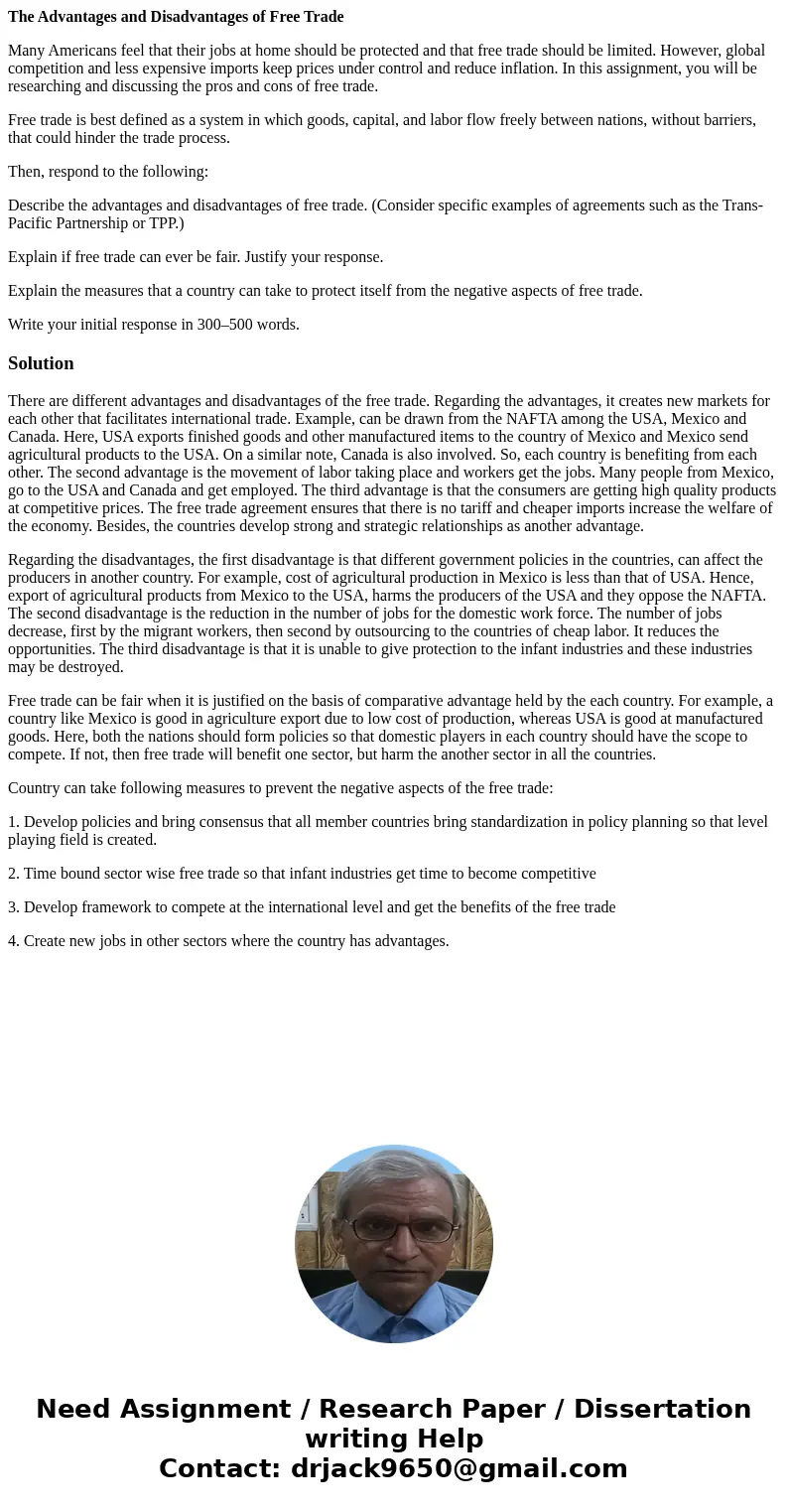The Advantages and Disadvantages of Free Trade Many American
The Advantages and Disadvantages of Free Trade
Many Americans feel that their jobs at home should be protected and that free trade should be limited. However, global competition and less expensive imports keep prices under control and reduce inflation. In this assignment, you will be researching and discussing the pros and cons of free trade.
Free trade is best defined as a system in which goods, capital, and labor flow freely between nations, without barriers, that could hinder the trade process.
Then, respond to the following:
Describe the advantages and disadvantages of free trade. (Consider specific examples of agreements such as the Trans-Pacific Partnership or TPP.)
Explain if free trade can ever be fair. Justify your response.
Explain the measures that a country can take to protect itself from the negative aspects of free trade.
Write your initial response in 300–500 words.
Solution
There are different advantages and disadvantages of the free trade. Regarding the advantages, it creates new markets for each other that facilitates international trade. Example, can be drawn from the NAFTA among the USA, Mexico and Canada. Here, USA exports finished goods and other manufactured items to the country of Mexico and Mexico send agricultural products to the USA. On a similar note, Canada is also involved. So, each country is benefiting from each other. The second advantage is the movement of labor taking place and workers get the jobs. Many people from Mexico, go to the USA and Canada and get employed. The third advantage is that the consumers are getting high quality products at competitive prices. The free trade agreement ensures that there is no tariff and cheaper imports increase the welfare of the economy. Besides, the countries develop strong and strategic relationships as another advantage.
Regarding the disadvantages, the first disadvantage is that different government policies in the countries, can affect the producers in another country. For example, cost of agricultural production in Mexico is less than that of USA. Hence, export of agricultural products from Mexico to the USA, harms the producers of the USA and they oppose the NAFTA. The second disadvantage is the reduction in the number of jobs for the domestic work force. The number of jobs decrease, first by the migrant workers, then second by outsourcing to the countries of cheap labor. It reduces the opportunities. The third disadvantage is that it is unable to give protection to the infant industries and these industries may be destroyed.
Free trade can be fair when it is justified on the basis of comparative advantage held by the each country. For example, a country like Mexico is good in agriculture export due to low cost of production, whereas USA is good at manufactured goods. Here, both the nations should form policies so that domestic players in each country should have the scope to compete. If not, then free trade will benefit one sector, but harm the another sector in all the countries.
Country can take following measures to prevent the negative aspects of the free trade:
1. Develop policies and bring consensus that all member countries bring standardization in policy planning so that level playing field is created.
2. Time bound sector wise free trade so that infant industries get time to become competitive
3. Develop framework to compete at the international level and get the benefits of the free trade
4. Create new jobs in other sectors where the country has advantages.

 Homework Sourse
Homework Sourse